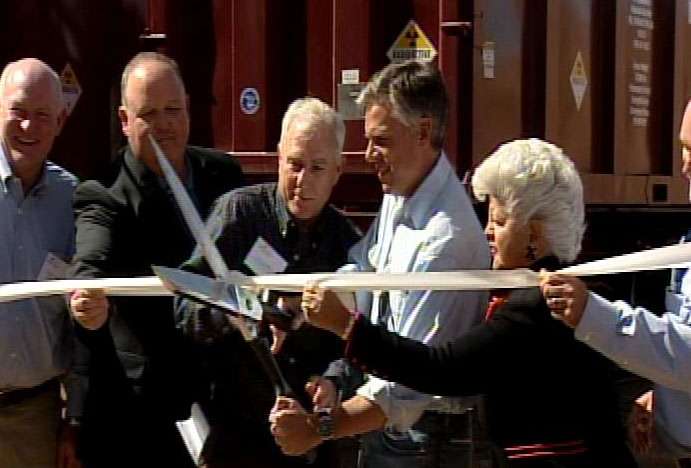Estimated read time: 2-3 minutes
This archived news story is available only for your personal, non-commercial use. Information in the story may be outdated or superseded by additional information. Reading or replaying the story in its archived form does not constitute a republication of the story.
MOAB -- Utah celebrated a major milestone Monday. Ribbon-cutting ceremonies marked the official kickoff of a project that really began two weeks ago and could last another two decades: They're finally moving 16 million tons of radioactive dirt away from the town of Moab.
The radioactive dirt is going into big boxes, the boxes onto rail cars: a project that will cost about $1 billion.

"You cannot put a price on the image and reputation of the state," said Gov. Jon Huntsman. "The fact that 50 years ago, during the height of the Cold War, the decision was to make this dump 3 miles out of town, nobody would have thought twice about it. And today, it seems absolutely ludicrous that ever would have been done."
Moab has been trying to get rid of it almost ever since the uranium mill that produced it shut down 25 years ago. "It's sitting in the flood plain of the Colorado River and draining into the river," explained Bill Hedden, executive director of Grand County Trust.
EnergySolutions is happy to be the corporate partner of the U.S. Department of Energy. The contract is worth hundreds of millions of dollars. They promise a safe operation.
It's quite low-level radioactive material. We handle all these types of material very carefully," said Steve Creamer, chairman and CEO of EnergySolutions.
If the company hauled all the waste to the EnergySolutions Arena, they could fill it up to the ceiling 23 times. Instead, they're taking it to the Book Cliffs.

Joe Downard, owner of Papa Joe's, isn't the type to say "Not in my Backyard," though the disposal site is pretty much in his backyard, on public land a mile or two away. In fact, because he knew the radioactive dirt was coming, along with a sizable work force, he bought the gas station and restaurant.
"Well, it was here for 50 years. Then it closed down, and I thought it would be a good chance to cater to the Department of Energy and EnergySolutions," Downard said.
EnergySolutions says the waste will be placed in a specially designed disposal cell and capped with protective rock nearly 10 feet deep. "The cap is designed, I think, for 1,000 years," Creamer said.
The neighbors consist pretty much entirely of Interstate 70 and Papa Joe's, and Downard isn't worrying about the waste. "We don't. Nope. We just worry about getting their business," he said.
The original plan was four trainloads a week for nearly 20 years, but federal stimulus money will speed things up, at least for awhile. The trains will soon be running daily between Moab and Papa Joe's.
E-mail: hollenhorst@ksl.com








